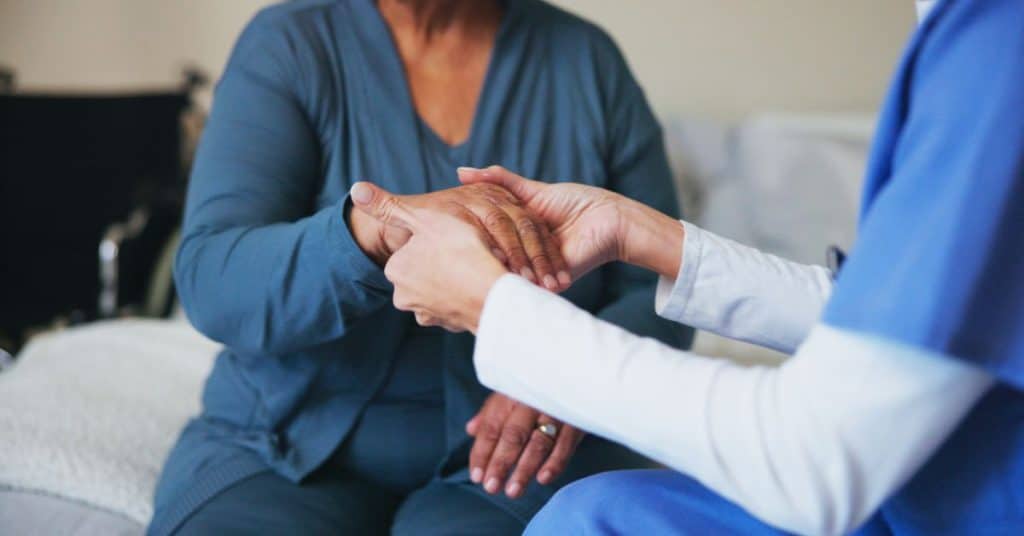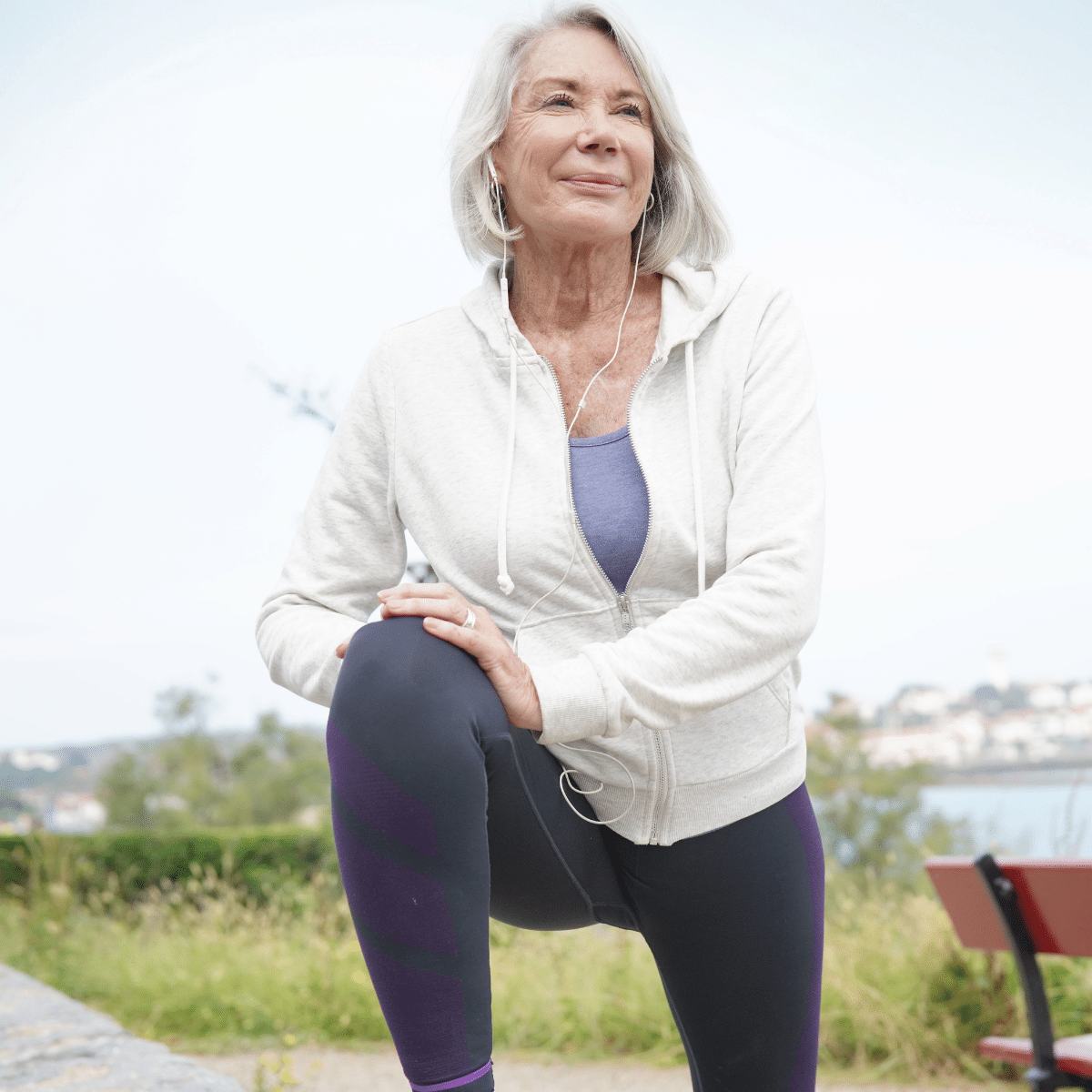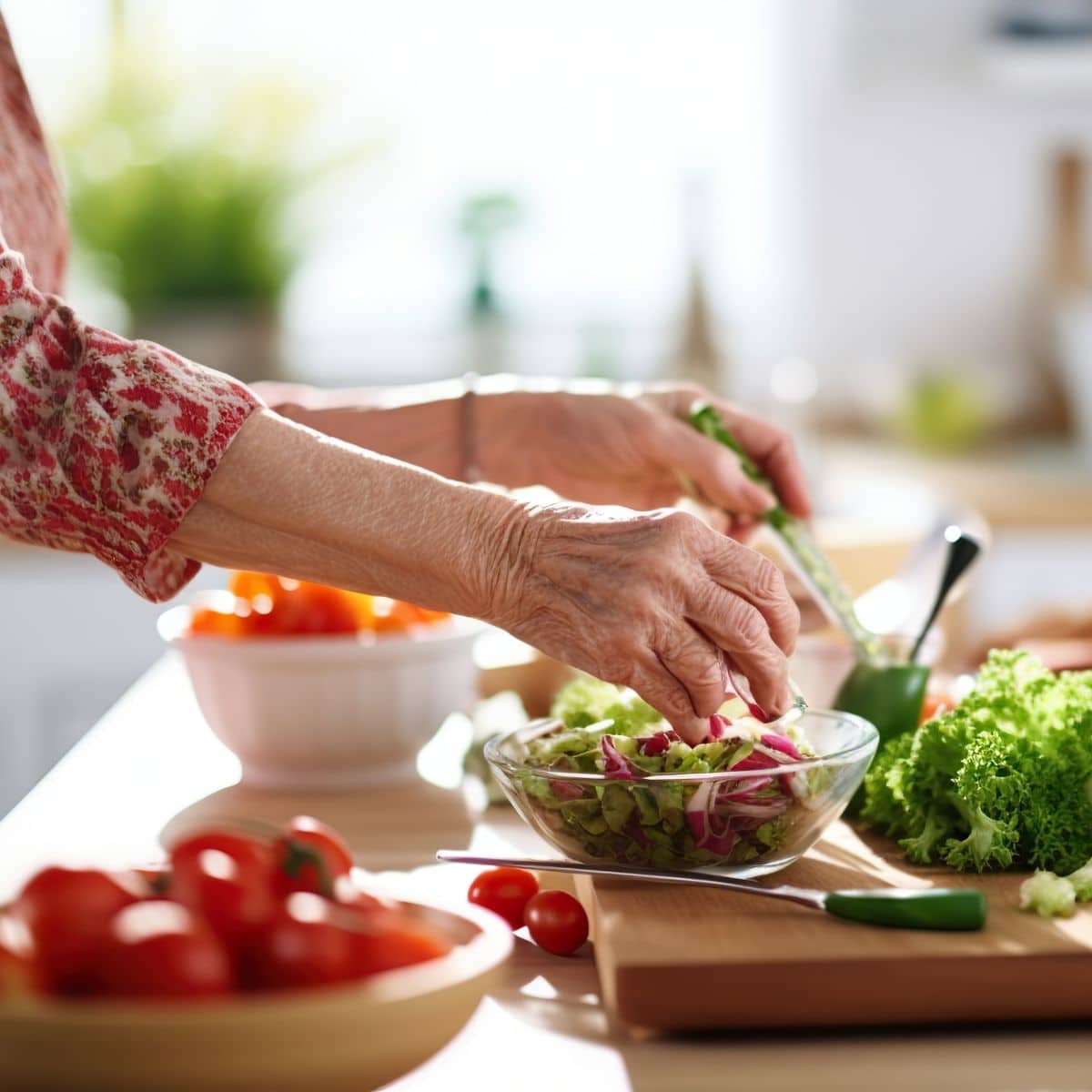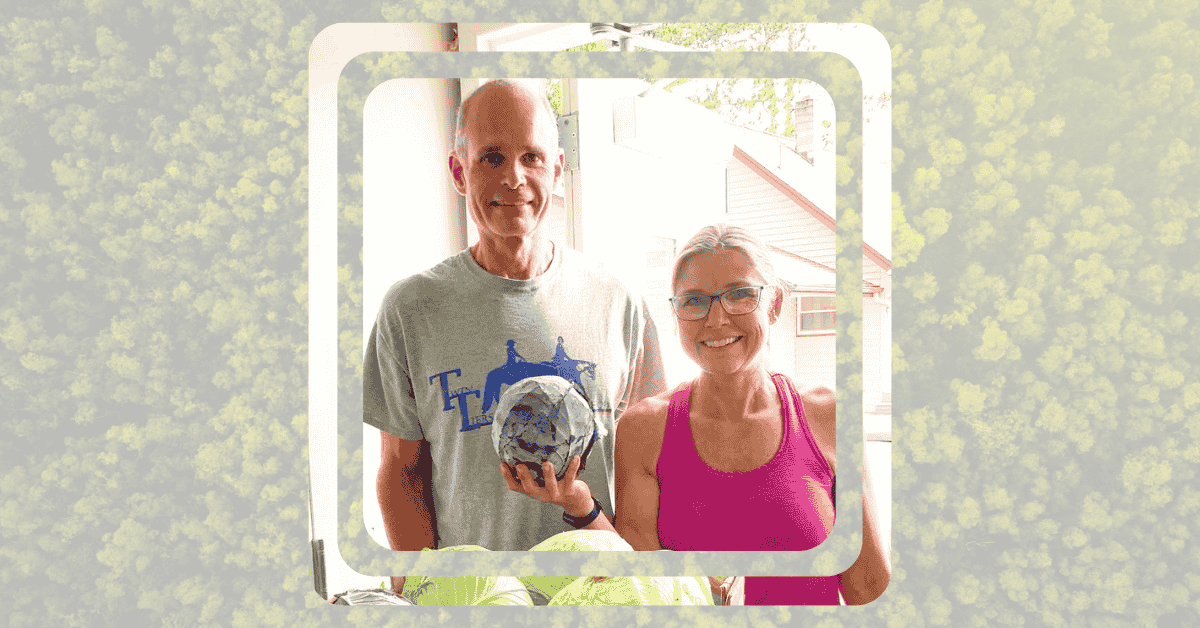

While most arthritis sufferers are told that they will need to learn to live with it, at the TrueNorth Health Center in Santa Rosa, California, we are helping patients learn to live without it.
Arthritis is a general term meaning inflammation of at least one of the joints in the body. We have all experienced inflammation at one time or another. The most common cause of inflammation is injury. Suppose you lose your footing and fall. During the fall, you twist your ankle. As a result, your ankle becomes inflamed. The injured area becomes red and hot, it swells up, and you experience pain. Fortunately, the symptoms associated with acute inflammation are part of the healing process. The increased blood flow to the area brings with it extra white blood cells, results in swelling and pain, and limits mobility to prevent further damage. This process allows your body to heal itself quickly.
Because there are many different causes of inflammation, there are many different kinds of arthritis. The initial inflammation resulting from trauma or other injury, such as the one described above, is not a big problem. However, continuous inflammation—the kind that goes on for years—leads to the very debilitating problems of arthritis, and it can result in permanently dysfunctional and deformed joints.
Osteoarthritis
The most common form of arthritis is osteoarthritis. More than forty million people worldwide suffer from moderate to severe disability caused by osteoarthritis.[1] This is what most people mean when they say, “My arthritis is bothering me.” The other name for osteoarthritis is degenerative joint disease, which is a pretty good description of what happens—the joints degenerate.
Osteoarthritis occurs most frequently in the joints that are most used and abused. It is often considered a disease of aging, but it is certainly not a condition experienced exclusively by the elderly. Instead, whether you develop osteoarthritis depends, to a large degree, on how you live your life, and the early onset of arthritis—including in individuals in their thirties and forties—is not that unusual.[2] As with other chronic conditions, however, the longer you live your life with poor habits, the higher your likelihood of developing osteoarthritis; four out of five people over 65 in the US show evidence of osteoarthritis.[1]
Osteoarthritis can take place in any joint. We might expect carpenters to more frequently develop it in their wrists, elbows, and shoulders; tailors, their hands and fingers; individuals who are obese, their ankles, knees, and hips.
Typically, osteoarthritis affects a single joint or just a few joints. The early stages of the process are painless. But eventually, the pain begins to develop into a deep ache. Many people with osteoarthritis feel some stiffness after resting and upon waking in the morning, and this stiffness usually lessens after the person has had time to move around a little.

Rheumatoid Arthritis
Rheumatoid arthritis belongs to a group of ailments called autoimmune diseases. In rheumatoid arthritis, the immune system malfunctions and damages the joint tissues. Inflammation of the joints leads to cartilage destruction. Rheumatoid arthritis is found in 0.5 to 1 percent of the US adult population.[3]
All of your joints are covered by a layer of smooth cartilage, which allows your joints to move easily; this lets your body move and distribute its weight evenly. The rheumatoid arthritis process causes the degeneration and destruction of this cartilage. Once this happens, the bone itself begins to erode and the joint becomes deformed.
Rheumatoid arthritis is usually seen in the peripheral joints—especially the hands, elbows, knees, and even the feet sometimes—and because it is a systemic problem, the distribution is usually symmetrical. If you have it on your right side, you usually have it in the same joints on the left side, too. You have probably seen someone who has swollen and misshapen joints that do not bend properly. These severe changes are often the result of rheumatoid arthritis.
Rheumatoid arthritis affects up to three times more women than men, and it most often appears between the ages of thirty and fifty.[3][4] Rest, which is helpful in osteoarthritis, does not seem to alleviate the pain of rheumatoid arthritis. Additionally, morning stiffness is much more severe and longer lasting with rheumatoid arthritis than osteoarthritis. Many people resort to taking some kind of medication to get past the stiffness and pain just so that they can button their clothes or tie their shoes.
Osteoarthritis and rheumatoid arthritis are the most common types of arthritis. But there are other less common types, such as gout, psoriatic arthritis, and ankylosing spondylitis. There appears to be a genetic predisposition to rheumatoid arthritis, and the less common types of arthritis also tend to have strong genetic predispositions, as indicated by concordance rates observed in twin studies.
Is There Hope for Relief?
Unfortunately, arthritis of all types has a very poor prognosis under medical treatment. There is no cure for any of the types of arthritis, and medical treatment consists mainly of attempting to relieve pain.
Although medical treatment is not a viable solution, not all hope is lost for those willing to develop a new awareness. New attitudes and behaviors toward arthritis can lessen, and sometimes even eliminate, the pain.
Practical Tips
Some of the primary steps you can take to alleviate the pain of osteoarthritis are mechanical and relatively easy to implement. For example, because osteoarthritis can be caused or aggravated by poor body mechanics, correcting poor posture and training yourself in proper body use—such as by the Alexander technique or similar techniques that teach proper body use—may help to relieve pain and stop the progression of osteoarthritis.[5]
Do not overload or overtax your joints. Alternate your activities to use different parts of your body, and if possible, rest frequently during the day. You can apply heat or ice packs both before and after using an inflamed joint. This can be very helpful in reducing pain and stiffness. Ice and heat stimulate blood flow to the area, which brings in added oxygen and nutrients.

Beneficial Exercise
Mild exercise that moves but does not aggravate the joint can be very beneficial.[6] Exercise prevents muscle atrophy around the affected joints. Muscles protect the joints, which is why it is so important to maintain the muscle strength around an arthritic joint. Exercise also helps circulate fluids in the joint capsule. These fluids serve a very important purpose: because no blood vessels go directly to the joint surfaces, oxygen and nutrients do not go directly to the cartilage coating around the joints and instead diffuse from the nearest blood vessels into the fluid that is in each joint. Exercise ensures plenty of motion of the fluid around the joints, so that the nutrients and the oxygen can get delivered. This allows the joints to repair themselves and prevents further degeneration.
Be mindful to not exercise so intensely that you worsen the pain. Some people may need to change the type of exercise they do. Runners who start developing arthritic knees and hips may need to switch to swimming, which takes the weight off the joint but still allows full joint motion. Consultation with a chiropractor or exercise physiologist may be necessary to determine what type of exercise you can do to maintain muscle integrity and joint motion while not making the degeneration worse.
Foot problems can cause the mechanics of the entire lower body to become faulty, which can put pressure in the wrong places and cause degeneration of the lower extremity joints. Wearing the proper shoes and possibly using orthotics (devices that hold your foot in a particular position) may help normalize the mechanics of the foot, resulting in reduced knee and hip pain.
Full Range of Motion
Chiropractic care and physical therapy may also be beneficial. Chiropractic adjustments can help arthritic joints by restoring a complete range of motion. The degeneration of a joint sometimes leads to the joint becoming tight and restricted in its movements. When it does not move through its full range, problems can occur. The joint will not get the circulation it needs, and the joints above and below it will have to move more to compensate, putting extra stress on these other joints and eventually causing problems. By restoring the full range of motion and the joint play, chiropractic care may alleviate pain and restore normal joint function.
Every day, virtually everyone inflames their joints through normal daily activities. Fortunately, if you get sufficient rest and sleep, your body can heal during the night. If you do not get enough sleep, inflammation can increase faster than your body can heal, which may lead to chronic problems.
Dietary Factors
People in other cultures work just as hard as Americans do, and a certain percentage of those populations probably have genetic predispositions similar to those of Americans. But people in those cultures do not always develop arthritis at the same rate as in the United States. Why? It appears that diet could be a major factor.
The incidence of arthritis is lower, and the ability to manage it is higher, in places where people consume smaller quantities of animal fat and animal protein than we do in the US. For instance, vegetarian and vegan diets have been shown to decrease arthritis pain and inflammation; even the more moderate Mediterranean diet, characterized by lower consumption of animal products, is associated with a lower risk of rheumatoid arthritis.[7][8]
At the TrueNorth Health Center, we see many people experience a decrease in their osteoarthritis after changing their diets. In particular, the two biggest dietary culprits seem to be animal fat and animal protein. The dietary changes do not reverse joint deformities, but the pain diminishes because the improved diet helps reduce the inflammation in the joints.

Eating Animal Products
Any foreign substance that enters the body and triggers an immune response is called an antigen. Our immune system manufactures antibodies to respond to these invading substances, and thus, antibody–antigen complexes are formed. The invaders can be viruses, bacteria, or even food proteins. The antibodies fight antigens by attaching to them and clumping them together to form complexes (many antibodies and antigens clumped together). These complexes are usually eliminated from the body by the immune system. But for some people, this does not happen. Instead, the complexes become lodged in various tissues around the body, where they cause inflammation. When these complexes lodge in the joints, you get pain, swelling, and redness.
Diet can play an additional role if a person’s intestines allow large food proteins to enter the body. When we eat, our digestive system breaks the food down into smaller and smaller particles. In most people, the particles must be very, very small—down to their basic components—before they can get from the digestive tract into the rest of the body, where they are put to use. But in some people, proteins get through at an earlier stage, when they are still quite large and complex. This is known as intestinal permeability (or, more colloquially, leaky gut).
When these larger proteins get into the body, they are perceived as antigens. The body starts attacking them and trying to eliminate them. Eating a high-protein diet, especially one containing animal products, may make people who have a genetic tendency to allow larger particles into their bodies more susceptible to arthritis.
A study published in the Lancet supports the contention that diet plays a role in controlling numerous arthritis symptoms.[9] Compared to a control group, individuals randomized to fast before transitioning to vegan and vegetarian diets for a year showed significant improvement in several measures, including pain score, duration of morning stiffness, health assessment questionnaire, and strength.
Fasting in Recovery
People can have very different reactions to various antigens. Dairy products, eggs, beef, wheat, and corn are the most common culprits, but there are many others, some of which are quite obscure.
If a person suffering from rheumatoid arthritis wants to identify their food sensitivities, the best method is to undertake a period of fasting (ingesting only pure water), followed by a period of rotational feeding. Many arthritis patients have fasted at the TrueNorth Health Center. During the fasting period, it is common for joint pain and swelling to totally disappear.
This pain-free period provides welcome relief, but proper refeeding after the fast is crucial. In fact, there is no point in undertaking a fast if your intention is to revert to your previous way of eating because this behavior is part of the problem (possibly the major part).
Life after the Fasting
During the refeeding period, we can find out which foods are contributing to the joint pain. We introduce various foods slowly, one at a time, starting with those that are least likely to cause problems. Ideally, every patient would adopt the dietary lifestyle we recommend at the center—a plant-based diet of fresh fruits, vegetables, and various nuts, grains, and legumes. This diet is low in fat and protein, high in fiber, and contains no animal products. But some people’s systems are intolerant to even some of these plant-based foods.
Arthritis patients need to learn the types and amounts of foods they can eat without inducing symptoms. Some people find that they cannot tolerate very much fruit; others find that they can tolerate some vegetables but not others. Simply eliminating the worst offenders—meats, dairy products, eggs, and wheat—may not adequately relieve the pain in a particular individual.
Refeeding is a learning process. Each person is different and must learn how to eat (and modify their lifestyle in other ways) to remain free from arthritis pain. As a result of their new awareness, many people come to consider their arthritis a kind of blessing because any recurrence of their arthritic pain reminds them of their need to adhere closely to a health-promoting lifestyle.
Experience of Success
At the TrueNorth Health Center, we have found that the most effective approach to arthritis involves an appropriate period of supervised fasting, followed by a health-promoting diet, moderate exercise, adequate rest and sleep, good body mechanics and posture, and, when appropriate, chiropractic manipulation and physical therapy. Arthritis is something our patients are learning to live without.
References
- Sen R, Hurley JA. Osteoarthritis. [Updated 2023 Feb 20]. In: StatPearls [Internet]. Treasure Island (FL): StatPearls Publishing; 2025 Jan-. Available from: https://www.ncbi.nlm.nih.gov/books/NBK482326/
- Felson DT, Hodgson R. Identifying and treating preclinical and early osteoarthritis. Rheum Dis Clin North Am. 2014;40(4):699-710. doi:10.1016/j.rdc.2014.07.012
- Venetsanopoulou AI, Alamanos Y, Voulgari PV, Drosos AA. Epidemiology and Risk Factors for Rheumatoid Arthritis Development. Mediterr J Rheumatol. 2023;34(4):404-413. Published 2023 Dec 30. doi:10.31138/mjr.301223.eaf
- Pavlov-Dolijanovic S, Bogojevic M, Nozica-Radulovic T, Radunovic G, Mujovic N. Elderly-Onset Rheumatoid Arthritis: Characteristics and Treatment Options. Medicina (Kaunas). 2023;59(10):1878. Published 2023 Oct 23. doi:10.3390/medicina59101878
- Preece, S.J., Jones, R.K., Brown, C.A. et al. Reductions in co-contraction following neuromuscular re-education in people with knee osteoarthritis. BMC Musculoskelet Disord 17, 372 (2016). https://doi.org/10.1186/s12891-016-1209-2
- Minor MA. Exercise in the treatment of osteoarthritis. Rheum Dis Clin North Am. 1999;25(2):397-viii. doi:10.1016/s0889-857x(05)70075-2
- Gunes-Bayir A, Mendes B, Dadak A. The Integral Role of Diets Including Natural Products to Manage Rheumatoid Arthritis: A Narrative Review. Curr Issues Mol Biol. 2023;45(7):5373-5388. Published 2023 Jun 28. doi:10.3390/cimb45070341
- Hu, P., Lee, E.KP., Li, Q. et al. Mediterranean diet and rheumatoid arthritis: A nine-year cohort study and systematic review with meta-analysis. Eur J Clin Nutr (2025). https://doi.org/10.1038/s41430-025-01628-8
- Kjeldsen-Kragh J, Haugen M, Borchgrevink CF, et al. Controlled trial of fasting and one-year vegetarian diet in rheumatoid arthritis. Lancet. 1991;338(8772):899-902. doi:10.1016/0140-6736(91)91770-u
Copyright 2025 Center for Nutrition Studies. All rights reserved.
Deepen Your Knowledge With Our
Plant-Based Nutrition
Certificate
Plant-Based Nutrition Certificate
- 23,000+ students
- 100% online, learn at your own pace
- No prerequisites
- Continuing education credits











